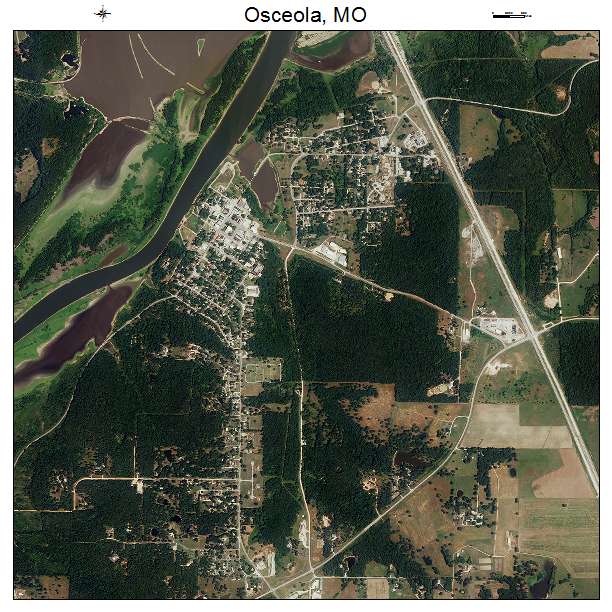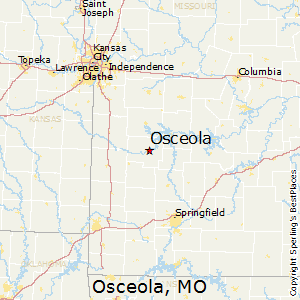
Echoes of Defiance: The Enduring Legends of America, and the Living Legacy of Osceola
America is a nation built not just on laws and land, but on stories. From the towering lumberjack Paul Bunyan to the sharpshooting frontiersman Davy Crockett, these legends are the cultural bedrock, shaping our understanding of courage, resilience, and the vast, untamed spirit of a young nation. They are often larger-than-life figures, their exploits blurring the lines between fact and embellished myth, each reflecting a facet of the American dream and its sometimes brutal realities.
But what of the legends etched not in tall tales, but in the very blood and soil of this nation? What of the figures whose defiance shaped the contours of American identity, often in tragic opposition to the dominant narrative? And how do these powerful echoes from the past resonate in the present, embodied by living descendants who carry the weight and pride of such names?
To understand the enduring power of American legends, we must look beyond the well-trodden paths of frontier folklore and delve into the complex, often painful, narratives of its Indigenous peoples. And there, we find a name that encapsulates both fierce resistance and profound tragedy: Osceola.

Today, that name continues to ripple through the landscape, not just in history books or the names of counties and towns, but in the vibrant, living leadership of the Seminole Tribe of Florida. Mo Osceola, a respected member of the Seminole Tribal Council, stands as a testament to the enduring legacy of a name that defined an era of relentless struggle and unwavering defiance. He is a bridge, connecting the mythic past to the very real, thriving present of a people who refused to be erased.
The Fabric of American Myth: From Tall Tales to Tragic Heroes
The legends of America are as diverse as its landscapes. Paul Bunyan, with his blue ox Babe, carved out the Great Lakes and the Mississippi River, embodying the superhuman strength and boundless optimism of early American industry and expansion. Johnny Appleseed, scattering apple seeds across the wilderness, became a symbol of peaceful pioneering and the promise of abundance. Davy Crockett, the "King of the Wild Frontier," epitomized the rugged individualist, his coonskin cap and rifle synonymous with self-reliance and adventure. These figures, largely products of folklore, served to mythologize the conquest of a continent and the forging of a distinct American character.
Yet, beneath these often romanticized narratives, lies a deeper, more complex layer of American legend – the stories of those who resisted the very expansion these figures represented. These are the legends born of conflict, resilience, and the desperate fight for survival. Figures like Crazy Horse, Sitting Bull, and Geronimo are not mere characters in a tall tale; they are historical figures whose actions and words became legendary symbols of Indigenous sovereignty and the profound tragedy of conquest. Their stories, often told through the lens of their adversaries, are increasingly being reclaimed and retold from their own perspectives, enriching and complicating the national narrative.
Among these, few figures loom as large or as tragically as Osceola, the charismatic Seminole war leader. His legend is not one of a mythical lumberjack, but of a real man whose defiance against overwhelming odds became a beacon of resistance, forever etched into the heart of Florida and the broader American story.
Osceola: Warrior, Diplomat, Martyr
Born around 1804 in what is now Alabama, Osceola (Asi-yahola, meaning "Black Drink Singer") rose to prominence during a period of immense pressure on the Seminole people. The Indian Removal Act of 1830, championed by President Andrew Jackson, sought to forcibly relocate all Native American tribes east of the Mississippi River to Indian Territory (present-day Oklahoma). The Seminoles, a diverse group of Muskogee-speaking people, Creek refugees, and runaway slaves, had forged a unique identity in the swamps and hammocks of Florida, fiercely independent and deeply connected to their land.
Osceola became a vocal and charismatic opponent of the forced removal. While not a hereditary chief, his leadership, oratorical skills, and unwavering commitment to his people earned him immense influence. The pivotal moment that cemented his legendary status came in 1835. During treaty negotiations at Fort King, Osceola famously refused to sign a document ceding Seminole lands. According to a powerful, albeit perhaps apocryphal, legend, he plunged his hunting knife into the treaty paper, declaring, "This is the only treaty I will ever make with the whites!" Whether the exact gesture occurred or not, the sentiment captured his resolute stance and became a symbol of his people’s defiance.

This act of defiance ignited the Second Seminole War (1835-1842), one of the longest and costliest Indian wars in U.S. history. Osceola led a brilliant guerrilla campaign, utilizing the treacherous Florida terrain to his advantage, frustrating and humiliating the U.S. Army. His tactics included ambushes, swift raids, and an uncanny ability to disappear into the dense Everglades. His forces successfully resisted repeated attempts by American troops to capture or defeat them outright.
However, the war took a tragic turn for Osceola. In October 1837, under a flag of truce, he was invited to parley with American forces near St. Augustine. In a blatant act of betrayal and disregard for military protocol, General Thomas Jesup ordered Osceola’s capture. This act, widely condemned even by contemporary American figures, forever stained the honor of the U.S. military. Imprisoned first at Fort Marion (St. Augustine) and then transferred to Fort Moultrie in Charleston, South Carolina, Osceola’s health rapidly declined. He died on January 30, 1838, likely from malaria or a throat infection.
The indignity did not end with his death. In a macabre act that further solidified his tragic legend, the post surgeon, Frederick Weedon, decapitated Osceola’s body, preserving his head in alcohol as a specimen. This act, driven by scientific curiosity and a chilling disregard for human dignity, became another layer in the complex, often dark, narrative of American expansion.
Osceola’s story, therefore, is not a simple frontier tale. It is a legend born of a desperate fight for survival, a testament to indomitable spirit, and a poignant reminder of the costs of Manifest Destiny. He became a symbol of resistance for Indigenous peoples across the continent and a figure of romantic tragedy for many Americans.
The Living Legacy: Enter Mo Osceola
Fast forward to the 21st century, and the name Osceola still resonates, not just in history books, but in the vibrant, living leadership of the Seminole Tribe of Florida. Mo Osceola, a respected member of the Seminole Tribal Council, carries the weight and pride of that name with every decision he makes.
For Mo, bearing the name is both a privilege and a profound responsibility. "My ancestor," he might say, reflecting on his namesake, "fought for our very existence. His spirit of defiance, of protecting what is ours, lives on in everything we do today." This isn’t just a historical echo; it’s a living directive. Mo Osceola’s work on the Tribal Council involves navigating the complexities of modern governance, economic development, and cultural preservation – all direct extensions of the fight for sovereignty that the original Osceola waged.
The Seminole Tribe of Florida today is a testament to the resilience embodied by their legendary ancestors. From a people driven to the brink of extinction, they have emerged as an economic powerhouse, famously pioneering the concept of tribal gaming with their Hard Rock International enterprise. They are a sovereign nation within a nation, operating schools, healthcare facilities, and cultural programs that ensure their traditions, language, and history are not lost.
Mo Osceola’s role in this modern Seminole success story is crucial. He is part of a generation of leaders dedicated to balancing the economic imperatives of a thriving enterprise with the sacred duty of cultural stewardship. "We build our future on the foundation of our past," he has articulated in various forums. "The lessons of our ancestors, especially Osceola, teach us to be strong, to be strategic, and never to give up on who we are."
This perspective offers a unique lens through which to view American legends. While Paul Bunyan represents a past era of expansion, Mo Osceola represents the active, ongoing negotiation of identity and sovereignty within the American mosaic. His leadership, focused on self-determination, economic independence, and the preservation of Seminole culture, directly channels the spirit of defiance that defined his namesake. He is not just carrying a name; he is living its legacy, demonstrating that the fight for self-preservation and cultural integrity continues, albeit on different battlefields.
Modernity and Myth: The Seminole Today
The Seminole Tribe’s journey from the Everglades to the boardroom illustrates the dynamic nature of American legends. Their story is a powerful counter-narrative to the idea that Indigenous cultures are relics of the past. Instead, they are vibrant, adapting, and asserting their presence. The success of enterprises like Hard Rock International is not merely a business triumph; it is a profound act of self-determination, transforming historical adversity into economic and political power.
Mo Osceola and his fellow council members are at the forefront of this evolution. They are tasked with ensuring that while the tribe engages with the global economy, it does so without compromising its core values and identity. This delicate dance between honoring a past of relentless struggle and building a future of self-determination is where the legend of Osceola truly comes alive in the present. It’s about leveraging modern tools and strategies to achieve the same fundamental goal that the warrior Osceola fought for: the right to exist, to thrive, and to be sovereign on their own terms.
The Enduring Power of Legend
The legends of America, whether of mythical frontiersmen or defiant war leaders, are more than just stories. They are living forces that shape identity, inform values, and provide context for our understanding of the nation. They remind us of the triumphs, the tragedies, and the complex tapestry of cultures that make up the American experience.
Mo Osceola, with his historical name and his contemporary leadership, embodies this truth. He is a direct link to a legend born of courage and sacrifice, a testament to the fact that defiance can outlive conquest, and that cultural identity can withstand centuries of pressure. His presence in the halls of tribal governance serves as a powerful reminder that the narratives of America are far from complete; they are continuously being written, informed by the echoes of the past and shaped by the living legacies of its people. The spirit of Osceola, the warrior, lives on, not just in history, but in the determination and self-reliance of the Seminole people today, proving that true legends never die; they simply evolve.


